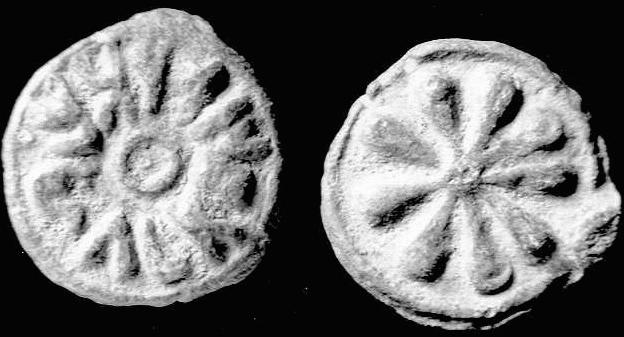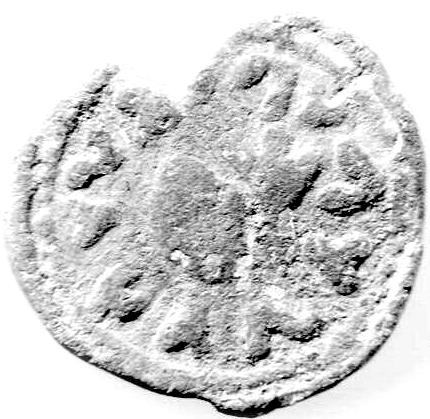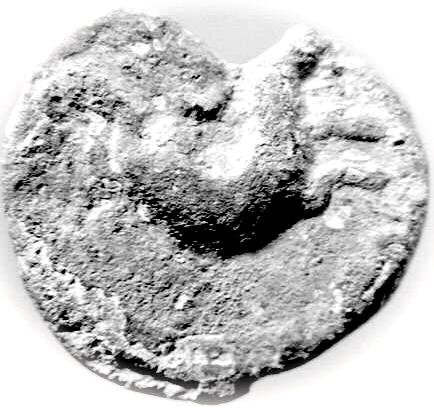
|
Events
News
Members
articles
Publications Book reviews Site search Internet Membership About ONS |

|
|
Numismatic and Archaeological evidence in Inland and Maritime Trade Price: US$ 75,=. Postage & packing to Europe (air mail) US$ 6,= and North America US$ 8,=. Available from: Lake House Book Shop, 100 Sri Chittampalam A. Gardener Mawatha, Colombo 2, Sri Lanka. E-mail: bookshop@sri.lanka.net The present book is in the tradition of two earlier publications of Osmund Bopearachchi as co-author, viz.: Pre-Kushana Coins in Pakistan with Aman ur Rahman (1995) and Ancient Indian Coins with Wilfried Pieper (1998). The present publication is based on coins, seals, sealings, moulds, intaglios and other antiquities from the collection of Rajah M. Wickremesinhe. The importance of the publication lies in the fact that all the published artefacts come from the area of Tissamaharama of ancient Ruhuna on the south-eastern part of the island. This, together with the results from the scientific, archaeological excavations carried out by the French Mission of Archaeological Co-operation in Sri Lanka makes this publication of foremost importance. Nowadays the main reason for visitors to come to Tissamaharama is the Yala West National Park, but the antiquity of the place goes back to the 3rd century BC. The fact that the artefacts from this area were collected systematically and over a long period makes this collection very important, particular the coins of a lead alloy, with an early Brahmi inscription, and which are brought to light in this publication for the first time. On the basis of the palaeography, these early inscribed coins may be attributed to the 2nd century BC. No such inscribed coins were known or published from the island, nor from the Indian sub-continent. These coins bear legends of personal names in the Sinhala-Prakrit language written in early Brahmi. On a visit to the Island during the winter-season of 1994/95, I obtained a similar coin in Colombo. It took me some years to get the inscription translated and with the help of Chandrika N. Jayasinghe (Dep. of Archaeology, Colombo), Osmund Bopearachchi, F.R. Allchin (Emeritus Reader in Indian Studies University of Cambridge) and particular Prof. Harry Falk (Institut fur Indische Philologie und Kunstgeschichte, Berlin), I finally succeeded in getting the inscription deciphered. As it is a variety not published in the present publication I have illustrated it below. 
Legend: Gahapati-Utara-puta-Tisha Translation: of Tissa son of Gahapati (householder) Utara. Weight: 3,65 gm. During the same winter-season of 1994/95 I also went to India to attend the 4th International Colloquium at the Indian Institute for Research in Numismatic Studies at Nashik. On my way to Nashik I visited Goa and from a dealer in Mapusa I obtained an old inscribed coin which now has also turned out to be from Huruna. The coin is cast from the same mould as the coin published and illustrated by the authors as E 12. Moreover it is, as far as I know, the first of its kind found in a non-Ceylonese context. As the present coin is slightly better preserved than the one published I take the opportunity to illustrate the piece here too. Again Prof. Harry Falk was kind enough to get the inscription read for this piece too.
Besides the "A - inscribed coins", the following subjects are covered in the book: C-Inscribed seals D-Inscribed sealings E-Uncertain inscribed coins F-Uninscribed coins G-Coins of foreign origin H-Local coins I-Money boxes and coin hoards J-Seals K-Sealings L-Moulds M-Lead objects N-Miscellaneous objects O-Intaglios P-Beads A seven-page conclusion finalises the text, followed by a catalogue of hundreds of objects, most of which have never been published before. As the photographs are sometimes missing sufficient detail, most of the objects are catalogued by excellent eye-copy drawings prepared by Wielfried Pieper. The book is completed by a table of Brahmi Script in Ceylon used from 3rd century BC to 1st century AD, an extensive bibliography, as well as a few maps. It hardly needs me to say that the book is an important publication written by the foremost authority in this field, Prof. Osmund Bopearachchi, director French Mission of Archaelogical Co-operation in Sri Lanka, Professor habilite, University of Paris IV-Sorbonne and Senior Researcher of the French National Centre for Scientific Research. The book provides the state of the art of what is presently known on the early coinage of Sri Lanka as well as on other subjects, which is largely missing in the well-known book of W.H. Codrington, Ceylon Coins and Currency (Colombo, 1924). Since the publication of Codrington’s book an extensive amount of archaeological and numismatic research has been undertaken much of which has not so far been properly and scientifically published. This publication fills, to some extent, this gap and ought, in my opinion, to be on the shelves of everyone who, either professionally or privately, is interested in the archaeological and numismatic history of the South-Asia. Jan Lingen |
|||
 | |||
| ons@onsnumis.org | © 1999-2024 ONS | ||

